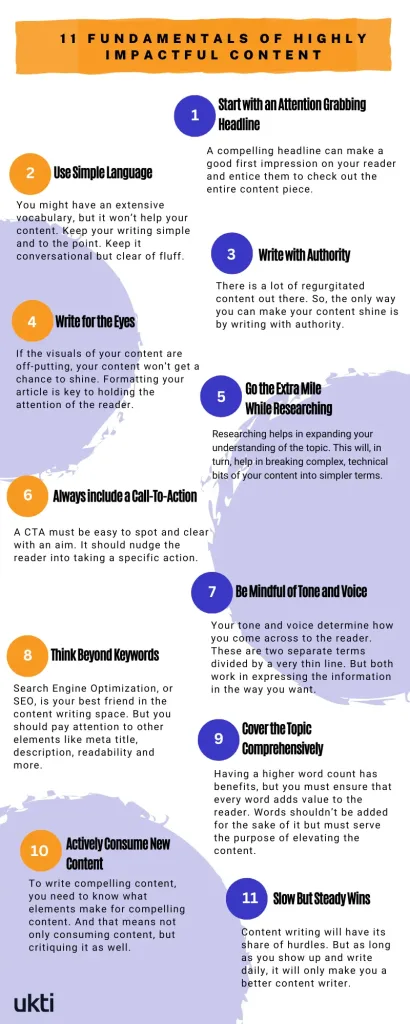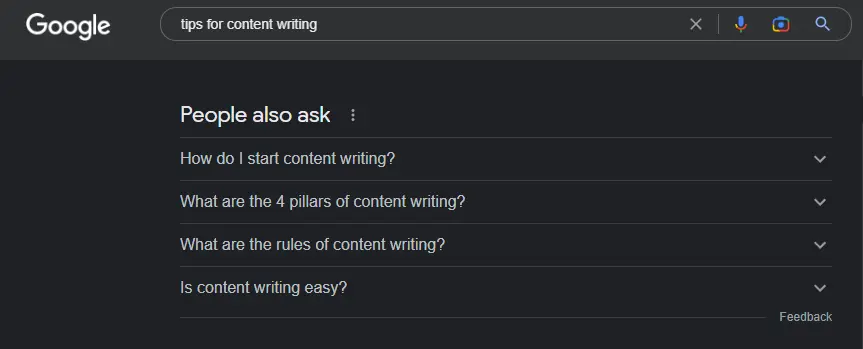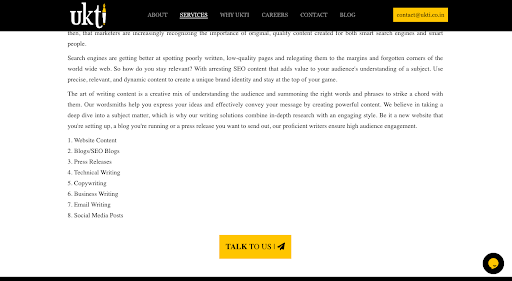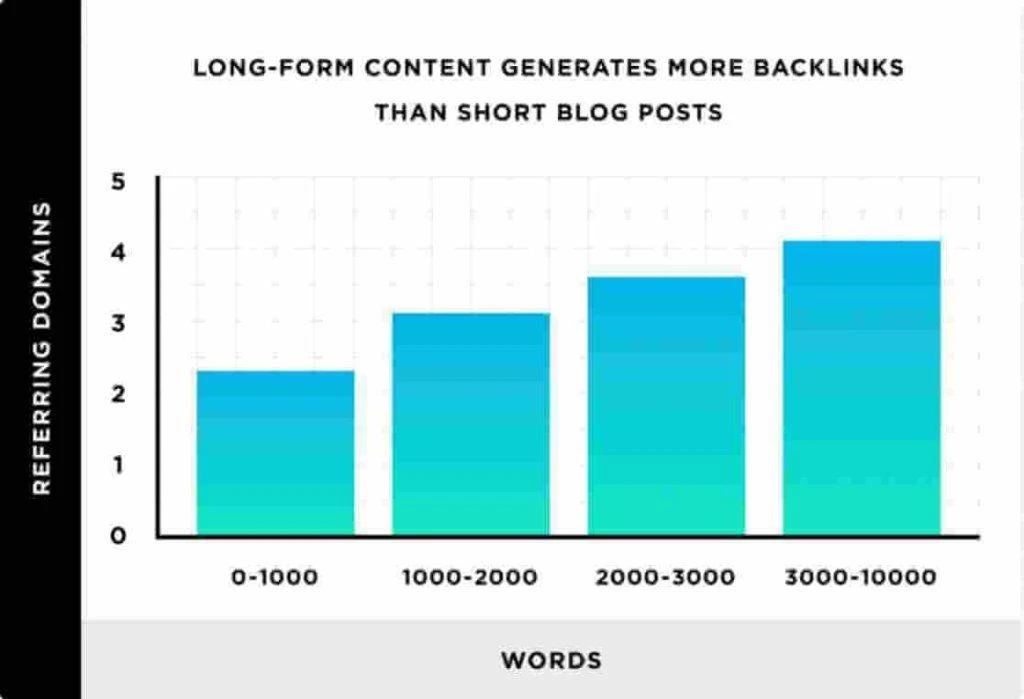Content writing is not as cut and dry as many believe. Any writer worth their salt will tell you it is an art that takes time to master.
And seeing that you’ve found your way to this page, you know what I am talking about.
In the digital age, content is everywhere. We consume it almost constantly, whether as a podcast on our way to work or as a post on social media. But it is also true that we’re sick of it. Content fatigue is a major issue in today’s creator economy. And this is only adding to the misery of writers, who’re already struggling to produce high-quality content and dealing with the seeming threat of AI content creation tools.
So – how do you create relatable, punchy content that adds value to the reader? Here is an 11-step roadmap you can follow. Let’s write better content!
- #1 Start with an Attention-Grabbing Headline
- #2 Use Simple Language
- #3 Write with Authority
- #4 Write for the Eyes
- #5 Go the Extra Mile While Researching
- #6 Always include a Call-To-Action
- #7 Be Mindful of the Tone and Voice
- #8 Think Beyond Keywords
- #9 Cover the Topic Comprehensively
- #10 Actively Consume New Content
- #11 Slow but Steady Wins
- Get Started!

#1 Start with an Attention-Grabbing Headline
A compelling headline can make a good first impression on your reader and entice them to check out the entire content piece. For a headline to be attention-grabbing, it must:
- Intrigue the reader and grab their attention
- Be a concise summary of what they can expect from the article
- Have the primary keyword in it
- Keep it under 160 characters
Your heading must drive interest in the content. So be clear and crisp about what you’re covering in the piece.
- What does the piece cover?
- Why is it important?
- Who is your target audience?
💡 Pro Content Writing Tip: If you want a second opinion on your headline, try using a headline analyser like Monster Insights or Content Row. These free online tools examine your headline from the SEO standpoint to find out if it can drive traffic, get shares and a higher ranking on SERPs
#2 Use Simple Language
You might have an extensive vocabulary, but you don’t have to use all the words you know. Keep your writing simple and to the point. Keep it conversational but clear of fluff.
Fluff is the bit of your content that unnecessarily increases the word count without adding value to the reader. This could manifest in rephrasing a point you’ve already made or digressing from the topic at hand. Adding fluff to your content will only confuse your reader and make the content harder to understand.
So, address the topic in simple language and keep the information bite-sized to boost reader engagement.
As Gary Halbert, the highest-paid copywriter in history, once said,
“What is a good writer? Well, in my opinion, a good writer is one who makes things perfectly clear. He makes it easy for the reader. Easy-to-understand what he is saying, easy to keep reading.”
#3 Write with Authority
There is a lot of regurgitated content out there. So, the only way to make your content shine is by writing with authority. But how does one do that?
A. Be Clear and Specific
If you have a well-formed idea, you have a diamond in the rough. The only way to make the diamond shine is by giving it time and suitable conditions. The same goes for writing content that packs a punch.
Always plan your content before writing it. Have an outline for your content, and make sure it has a lucid and logical flow. A trick that works wonders is analysing your audience’s pain points, turning them into questions, and answering them in a logical flow.
B. Add Compelling Statistics
Numbers add bulk to your arguments. Just consider the two statements below:
- With over 7 million blogs published daily, the number is soaring high.
- The number of blogs published daily has increased manifold.
Which one do you find more impactful? The first one, isn’t it? Adding specific data can make a world of difference. It’s just that easy.
They prove you know what you’re talking about. They drive your credibility and appeal to the reader’s rationality. But don’t let statistics compromise the clarity of your piece. Add them only if they substantiate your point.
C. Quote Experts
If numbers can’t help you, turn to the words of subject matter experts. Watch interviews, listen to podcasts or read articles to find expert quotes and include them.
This will not turn you into an expert on your own. But your readers will appreciate the time and effort you’ve spent curating the information and opinions of industry veterans. And so will the search engines.
This is a practice we follow religiously at Ukti. If this is something you’re after, you can share your requirements with us.
#4 Write for the Eyes
If the visuals of your content are off-putting, your content won’t get a chance to shine. Formatting your article is key to holding the attention of the reader. Here are some formatting tips you can use:
- Divide the copy into as many subheadings as possible.
- Organise the content into small paragraphs of two to three lines instead of a giant wall of text. This will make it more scannable.
- Include relevant images, graphs, and infographics to break the monotony
- Maintain appropriate spacing between the lines
The average attention span of a person today is just 8.25 seconds. That’s all the time you have to convince the reader that your content has what they’re looking for. Formatting your content to keep it ‘skim-friendly’ makes it pleasant for the reader and drives your search rankings.
#5 Go the Extra Mile While Researching
A well-researched piece of content shines like no other. As a content writer, researching must be part of your ritual. Be warned; it takes a chunk out of your day. But it is an important ingredient in writing valuable content.
Researching helps in expanding your understanding of the topic. It aids you in breaking complex, technical bits of your content into simpler terms, making your content easy to understand for the reader.
💡Pro Content Writing Tip: When you search for something on Google, look into the ‘people also ask’ section to gain insight into your reader’s mind. You can answer these questions in your piece as well. With this, you write a well-rounded piece that covers all the pain points and queries the reader might have.

#6 Always include a Call-To-Action
Content as a marketing function aims to drive conversion rates. Converting a potential customer into a paying customer is how you know your content is doing its job.
A call to action or CTA is anything that will encourage your reader to do something. This could be by asking them to click on a link to know more about a topic, to buy something, or even a pop-up window requesting them to share their contact details to get discounts and updates.
A CTA must be easy to spot and clear with an aim. It should nudge the reader into taking a specific action. For example, the CTA on Ukti’s Services page.

#7 Be Mindful of the Tone and Voice
Your tone and voice determine how you come across to the reader. These are two separate terms divided by a very thin line. But both work in expressing the information in the way you want.
▶ Tone
When we speak, our tone is controlled by our pitch. When we write, our tone is communicated through fonts, punctuation, and our choice of words. As a result, it can vary from one content piece to another, depending on the topic.
For instance, your tone should be helpful and empathetic if you’re writing a how-to piece like “How to Create a Highly Successful B2B Blogging Strategy (+ 5 Examples)”. Meanwhile, a satirical piece calls for a humorous tone.
Here’s another example. Suppose you’re writing a piece on the “woes of air pollution.” This is how you can use the two tones.
Empathetic tone: It can be depressing to step out and still feel like you’re in an airtight box.
Humorous tone: Are you living in Delhi? I’m sorry about your eyes, your heart, and most importantly, your lungs.
▶ Voice
While the tone is determined by the topic intent or audience preference, the voice belongs to the brand. As a content writer, you will use the company’s brand personality to determine whether the voice of the content should be casual, respectful, assertive etc.; the spectrum is pretty wide on this one.
Let’s take the same example as earlier. If the voice for your content is casual, it will translate into something like this: “Today’s air quality is not our vibe”. But if the voice were respectful, it would be like this: “Today’s air quality is a concern for many.”
The tone and voice you use throughout your content piece must help the reader understand the information and elevate your content.
Additional Read:10 Common Types of Tone in Writing
#8 Think Beyond Keywords
Search Engine Optimisation, or SEO, is your best friend in the content writing space. It helps you optimise visibility and relevance to drive traffic and conversions. SEO enables you to identify keywords or phrases that should be included in your content to rank high on Google. These keywords will vary depending on the topic.
But there are other factors at play here as well. Here’s a quick look at these.
▶ Meta title
This is also known as a title tag and refers to the text that is displayed on the search engine result page or SERP. This can be different from the blog title. And while this is not a metric for ranking, having an attention-grabbing meta title that includes the primary keyword and defines the page adequately can help increase click-through rates or CTRs.
▶ Meta description
This is a short snippet visible under the meta title on the SERP that summarises the blog. It helps readers understand what they will find if they visit the blog. A meta description allows the reader to decide whether or not they should visit your blog.
▶ Readability score
This is a number that tells you how reader-friendly your content is. If you get a high score, it means your content is easy to consume. You can check the readability score of your piece using WebFX or Readable.
Additional Read: How to Improve SEO Rankings in 11 Steps
#9 Cover the Topic Comprehensively
Although Google says that word count is not a factor in determining your SEO ranking, having long-form content with a word count of over 1200 words is found to have higher rankings.

The reasons behind this are:
- Long-form content can include long-tail variations of primary keywords. The competition for these is far less, hence driving conversion rates
- Long-form content helps Google understand your content. Headings and subheadings indicate the information that your content is providing
- Google tracks the time a user spends on a page. A higher word count means that people will take the time to review your content, making Google rank your content higher.
Having a higher word count has benefits, but you must ensure that every word adds value to the reader. Words shouldn’t be added for the sake of it but must serve the purpose of elevating the content.
#10 Actively Consume New Content
To write compelling content, you need to know what elements go into making a piece of content effective and impactful. And that means not only consuming content but critiquing it as well.
Don’t just passively consume content when you read blogs and articles or even while listening to podcasts and interviews. Instead, be critical about it so you can take away the true value present there. This will help you imbibe it when you write.
Read critically, and you’ll find small ingredients contributing to a better user experience. These could be humorous wordplay, a study you could refer to when you write content next, or even how the sentence structure caught your eye. All of these will help make you a better content writer.
To give you a head start, here are some suggestions.
- Hubspot
- The Content Marketing Scoop podcast
#11 Slow but Steady Wins
You are bound to face new challenges whenever you step into undiscovered territory. Content writing will also have its share of hurdles. But as long as you show up and write daily, it will only make you a better content writer.
So, keep practicing, and soon you’ll be writing highly compelling content.
Get Started!
Content writing is easier said than done. As a content writing service provider, we get where you’re coming from. But content writing is a skill you can perfect over time with practice and perseverance. But armed with these tips, you’re sure to have a promising future.


12 thoughts on “This is How You Write Better Content”